My Science Fair Project
by Greg Ceccherelli
Reprinted from "Crown Jewels of the Wire", November 2000, page 32
Pin Type Glass
Insulators and
Drip Points
There is a lot of debate among insulator collectors as to whether or not drip
points actually do anything.
Some collectors say that they work. Most collectors think it was a gimmick used to sell more insulators.
I decided to find out. . .
One night I was playing with an insulator under the faucet and noticed that
the water was not dripping off the drip points. Instead it was dripping
between the drip points. I found this odd because from what my dad had told me
about drip points, I expected that the water would drip off the point of the
drip points. After all, they are called drip POINTS.
Since there was a science fair coming up at my school, I decided to make drip
points on glass insulators the subject of my project.
My test procedure was the following:
|
a)
|
Use identical insulators, one with and one without drip points. In my
experiment I used clear Hemingray-19s (CD 162), one with and one without drip
points. (See Photo 1.)
|
|
b)
|
One side of the Ohm meter is connected to the pin. The other side is attached
to the wire groove. The purpose of this is to measure the electrical resistance
of the insulator, the higher, the better. (See Photo 2a. and Photo 2b.)
|
|
c)
|
Spray Windex, which is conductive on the insulator. I used Windex because it
evaporates quickly and it leaves no residue. (See Photo 3.)
|
|
d)
|
Measure the electrical resistance as the Windex evaporates. I measured the
resistance of the insulator under test every 30 seconds until the resistance was
above 20 megaOhms, which is the most my meter can measure.
|
|
e)
|
Repeat the test six times for each insulator.
|
|
f)
|
Average the results and graph the data. (See Figure 2. and Figure 3.)
|
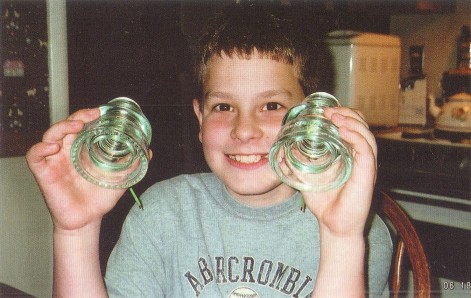
Photo 1. Greg holds two ice green CD 162 Hemingray-19 signals which he is
about to subject to his tests. One has drip points, the other a smooth base.
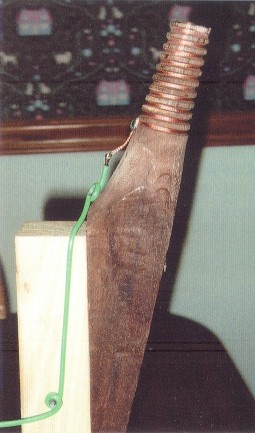
Photo 2a. A wooden side pin is mounted on a piece of wood. A piece of copper
wire is wrapped around the threads of the pin and connected to the pin
electrode.
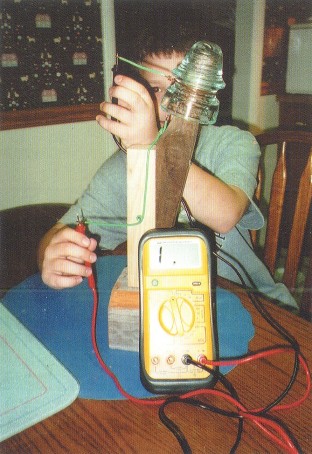
Photo 2b. With the insulator placed on the wooden peg wrapped with copper
wire, Greg wraps a second piece of copper wire around the wire groove on the
insulator. He then attaches it to the insulator electrode leading to the Ohm
meter.
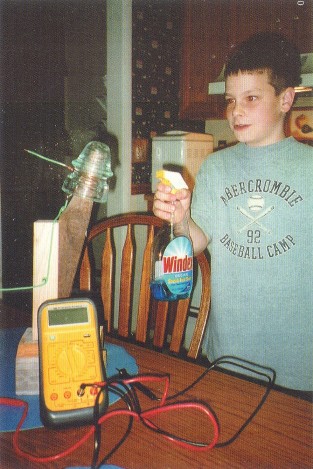
Photo 3. With the electrodes in place and meter turned on, Greg sprays the
surface of the test insulator with Windex.
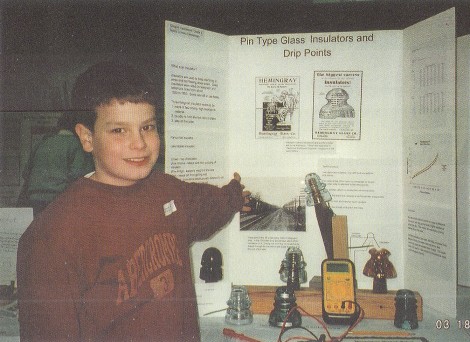
Greg proudly shows his full display at the science fair which he enhanced
with some early Hemingray ads extolling the virtues of the drip points on their
products and several colorful, eye-appealing purple, carnival and aqua pieces.
And, his work received 3rd Place at the fair!
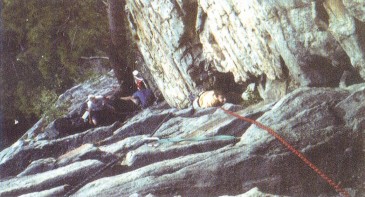
Greg sent along this photo of him learning to rock climb. He is attached to
the red rope (center of picture) while his father (in white) keeps a watchful
eye on his son from the ledge below. Repelling is much safer than telephone pole
climbing, Greg, which should be left to the experts.
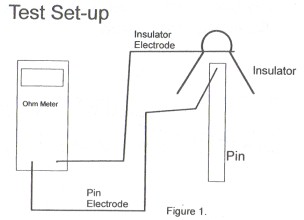
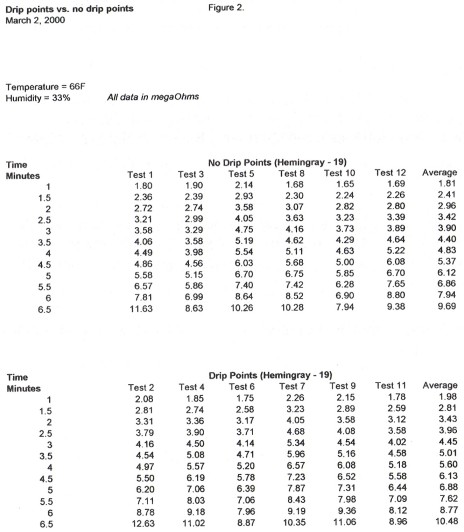
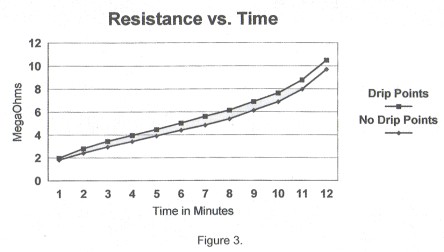
Conclusion:
My data shows that drip points do make a difference. Insulators with drip
points have a higher resistance while they dry. This means less electricity is
being wasted down the poles.
I didn't specifically test the insulators in simulated rain or fog. But I
noticed that the resistance was similar for both the dripped and non-dripped
versions when they were dripping wet with Windex. My guess is that during rain
and fog the drip points don't really make a difference. After rain and fog,
while the insulators are drying, the drip points made a difference.
(For those parents who have been through the "science project"
years or anticipate their coming in the future will certainly join me in saying
that Greg's efforts must be commended.)
| 